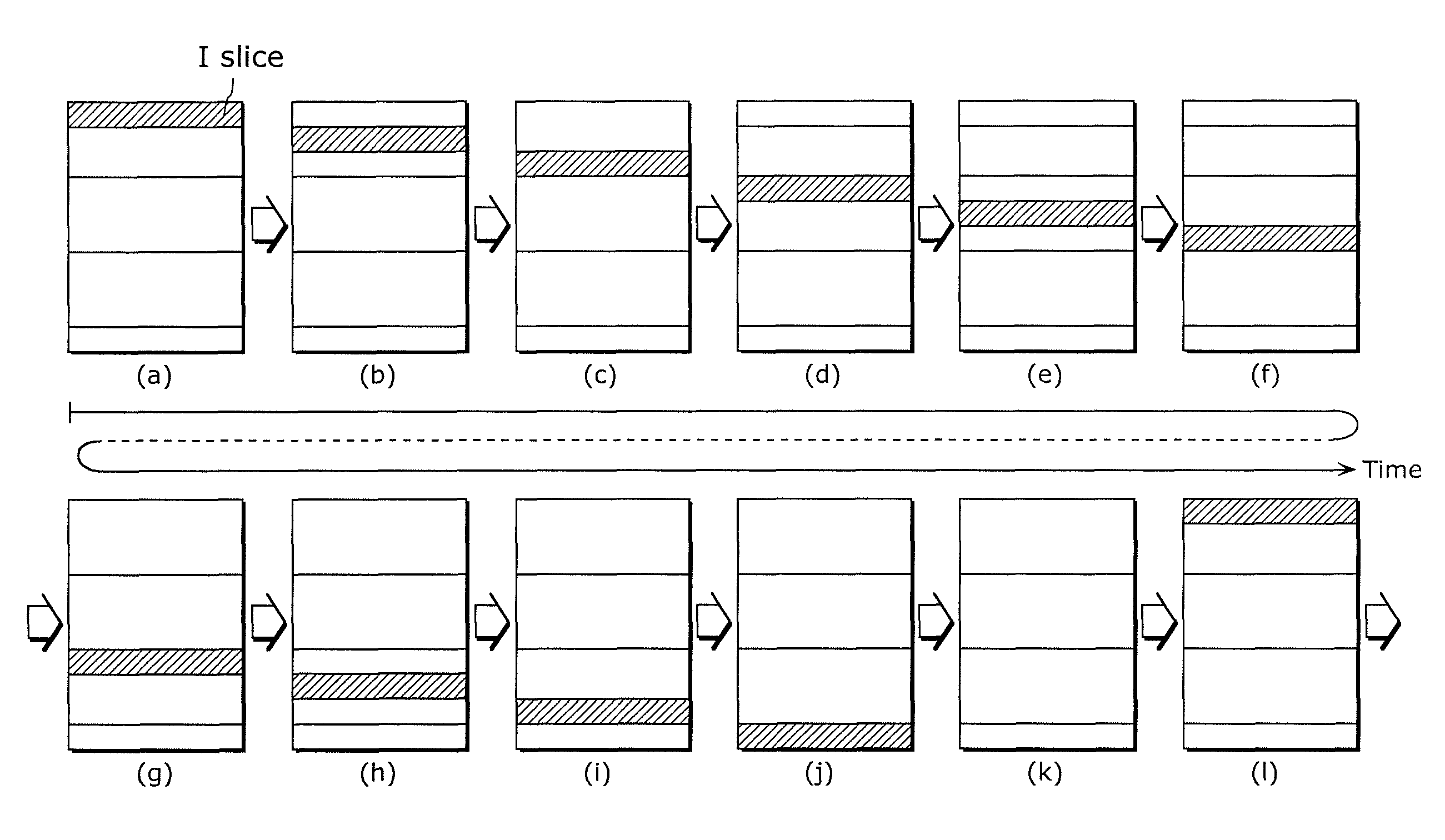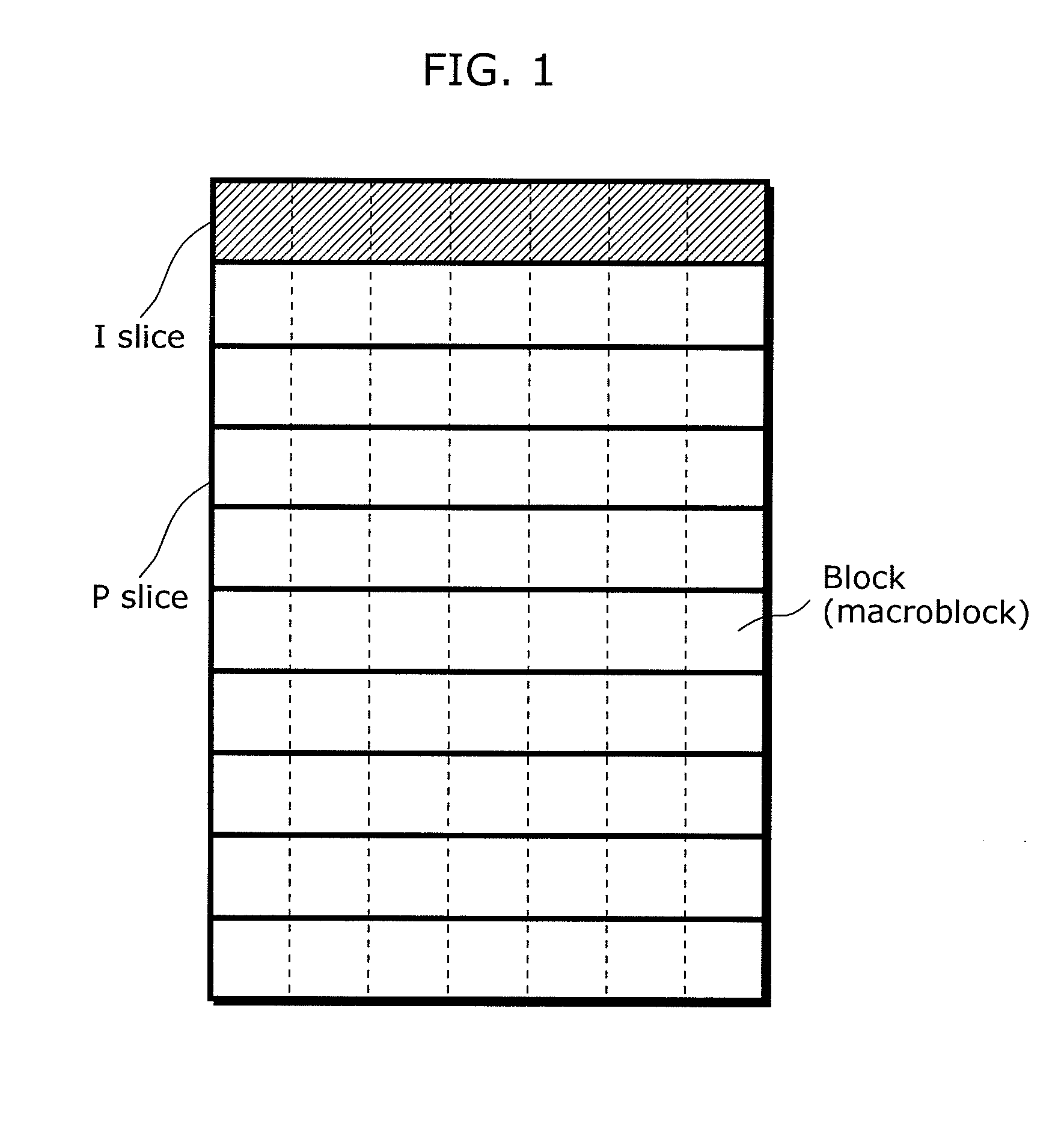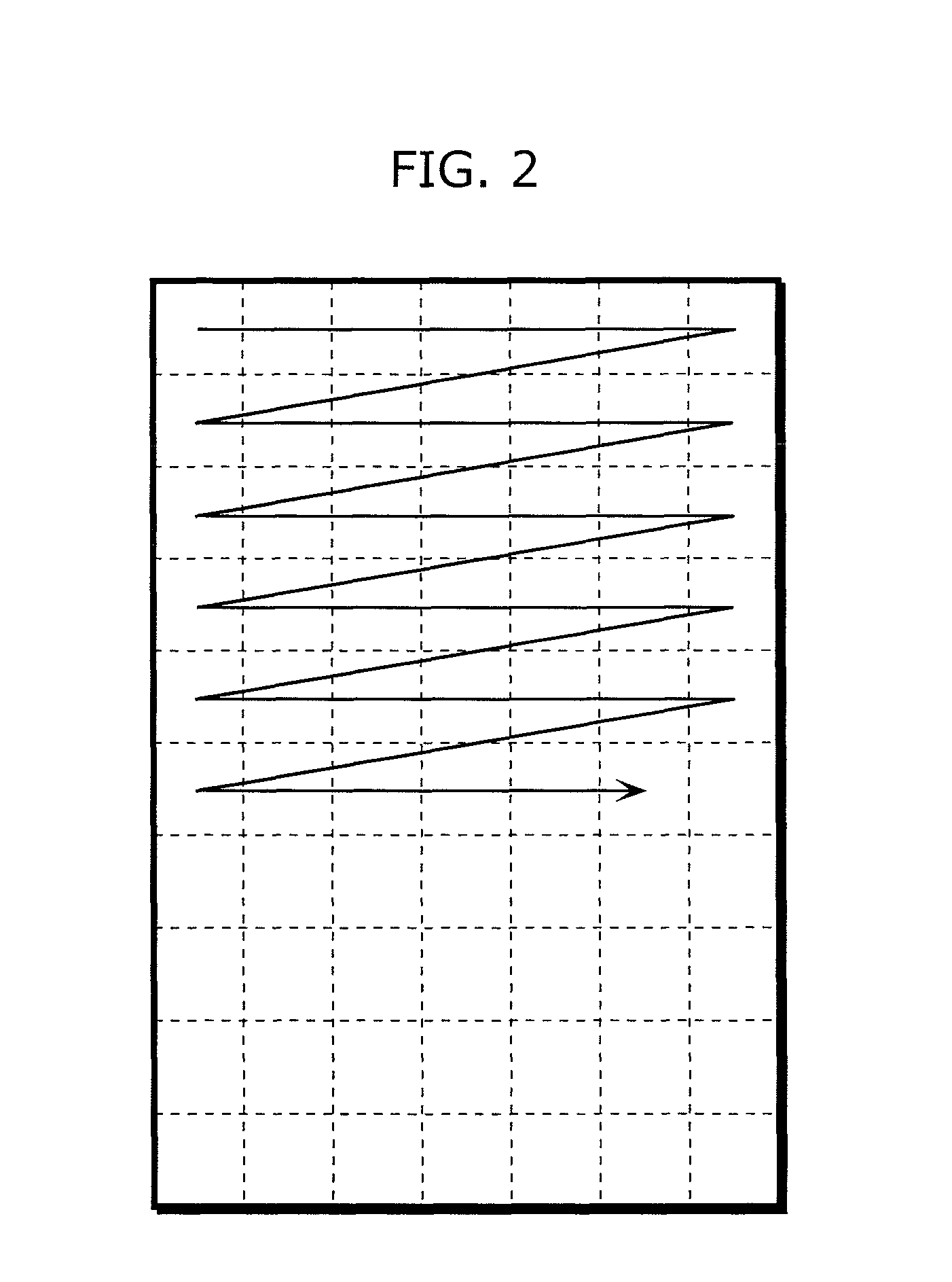Picture coding method and picture coding apparatus
a picture coding and picture technology, applied in the field of picture coding methods and picture coding apparatuses, can solve the problems of not being able to send video for a television and a camera, not being able to handle these massive amounts of multimedia information in digital form, and affecting the quality of the picture, so as to reduce the computational complexity, improve the compression rate, and reduce the frequency of stream transmission loss
- Summary
- Abstract
- Description
- Claims
- Application Information
AI Technical Summary
Benefits of technology
Problems solved by technology
Method used
Image
Examples
embodiment 1
[0219]FIG. 11 is an explanatory drawing showing a relationship between slices and blocks using a slice division method according to Embodiment 1 in the present invention. The picture (1 frame) in FIG. 11 is composed of blocks. Among the blocks composing the picture, an area of diagonally shaded blocks indicates a slice, that is, an I-slice. The blocks enclosed by thick lines compose another slices, that is, P slices. The example herein indicates that the picture is composed of I-slices and P slices. The difference with the slice division method in accordance with MPEG-2 in FIG. 1 is that blocks included in an I-slice is smaller in number than that of a P slice (slice size is smaller) in the slice division method in the present invention.
[0220]FIG. 12 illustrates an example of divided slices in pictures that are temporally consecutive according to Embodiment 1 in the present invention. The diagonally shaded slices indicate I-slices, and the rest of the slices indicate P slices.
[0221]...
embodiment 2
[0248]Next, Embodiment 2 will be hereinafter described. The description of the same configuration and operations as those of Embodiment 1 will be omitted.
[0249]FIG. 15 illustrates an example of divided slices in pictures that are temporally consecutive according to Embodiment 2 in the present invention. The diagonally shaded slices are I-slices, and other slices are P slices. The difference with the slice division method in FIG. 12 according to Embodiment 1 is that in the slice division method in FIG. 15 according to Embodiment 2, the size of the P slices immediately subsequent to the I-slices is fixed (N blocks), and the boundary position (slice division position) between P slices that are below the I-slice are moved down by the number of rows corresponding to I-slices.
[0250]Thus, the number of slices included in the pictures according to Embodiment 2 is smaller than that of Embodiment 1. For example, FIG. 15 is compared with FIG. 12. Comparison between (a) in FIG. 12 and (a) in FI...
embodiment 3
[0253]Next, Embodiment 3 will be hereinafter described. The same configuration and operations as those of Embodiments 1 and 2 will be omitted.
[0254]FIG. 17 illustrates an example of divided slices in pictures that are temporally consecutive according to Embodiment 3 of the present invention. The diagonally shaded slices are I-slices, and other slices are P slices.
[0255]Embodiment 1 shows the example that all of the pictures include I-slices except for the pictures between the pictures each having the I-slice in the lowest row and the pictures each having the I-slice in the highest row. In Embodiment 3, assumed is a case where the quality of network is higher and the I-slices may be less frequently inserted. In such a case, as shown in FIG. 17, a picture having no I-slice is regularly inserted.
[0256]When a stream is reproduced, in general, at least one I picture is desirably said to be inserted in the stream that lasts 2 seconds. For example, when 30 frames are needed per second for ...
PUM
 Login to View More
Login to View More Abstract
Description
Claims
Application Information
 Login to View More
Login to View More - R&D
- Intellectual Property
- Life Sciences
- Materials
- Tech Scout
- Unparalleled Data Quality
- Higher Quality Content
- 60% Fewer Hallucinations
Browse by: Latest US Patents, China's latest patents, Technical Efficacy Thesaurus, Application Domain, Technology Topic, Popular Technical Reports.
© 2025 PatSnap. All rights reserved.Legal|Privacy policy|Modern Slavery Act Transparency Statement|Sitemap|About US| Contact US: help@patsnap.com



